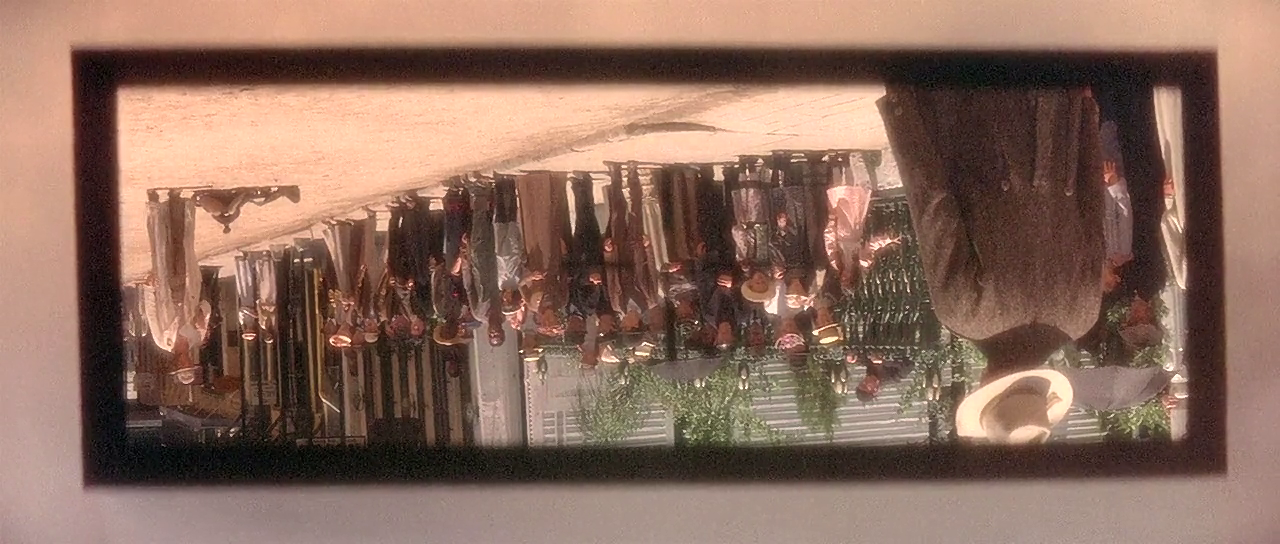My
Name is Nobody (Tonino Valerii/Sergio Leone, 1973) sits at all sorts of strange intersections: between comic and serious spaghetti
westerns (the former typified by the Trinity series starring Terrence Hill, ‘Nobody’
in this film); between the old West of Henry Fonda’s idealism and the post-modern
West of endless cultural references and tropes; but most crucially the
intersection in a dark movie theater of a star and his awestruck fan.
 |
| From which came the Wild Bunch. |
Fonda
plays Jack Beauregard – aging, conscientious gunslinger who draws so fast that
he can fire three shots in the space of one. A hero of the Old West, a ‘national
monument’, he’s the star of Nobody’s eyes. Nobody is a comically fast draw (who, in deference to his idol, never exhibits his tact before Beauregard),
Trinity wandered into the wrong set. He knows Beauregard’s exploits by heart (“82
was one of your best years”) and wants to see him go out with a bang against
the infamous Wild Bunch (“150 who shoot and ride like there's thousands”). So
he dogs Beauregard’s tracks and practically coerces him into a showdown.
The movement
here practically plays as a riff on fan-culture myth: the movie star a graceful,
kind fellow with super-powers; the star’s heroic exploits in movies (where the star and the character can never be separated) and the fan's own dream scenario starring the hero pitted against villains.
Hero-worship,
however, is no one-way street. The dreamer fashions himself after the star:
practicing his swagger in front of a mirror and, at least in his subjective estimation, outdoing him. The fan is a self-appointed successor to the hero,
the one who inherits his legacy and displaces him.
 |
| Wearing the hero's hat. |
It is then entirely fitting that the star has to enter the dream under the aegis of the devotee. The screen – the barrier between performer and spectator – dissolves. The kid in the theater
saves his idol from a rut and gives him the perfect alibi for a peaceful
after-life. A final gambit. Death in the space of the movie.
To be staged in front of an audience, with a camera recording the proceedings for
eternity (the players being asked to re-position to fit into the camera's frame).
In the
after-life, three days after his ‘death’, the superstar writes a letter to his
fan – thanking him for the trouble taken, for the favour done, noting how
Nobody’s finally a Somebody, a standout from the crowd in the theater. The
dream has been played out, the payback delivered. The star will ride
out in a ship called 'The Sundowner' and the kid will take his position.
Post-scripts
The aspect ratio of frames, wherein the meta-myth is constructed.
 |
| The old hero looking at himself in a 4:3 mirror: the frame of classic westerns. |
 |
| The new hero in his Cinemascope frame. |
 |
| The new hero displacing the old in the same space: the barbershop (refer first still in this triptych) and its old-time 4:3 mirror. |






























